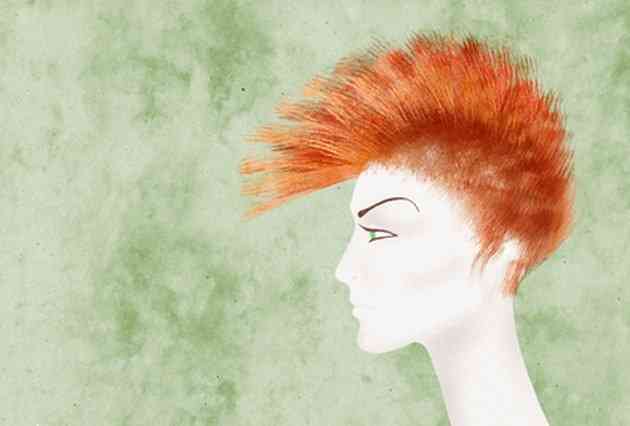The Health Effects of Hair Coloring

The health effects of hair coloring are, to a certain extent, unknown. And the link between hair coloring and cancer is controversial and, to date, inconclusive. But many of the chemicals contained in frequently used hair dyes have been shown to be dangerous. Such chemicals can cause allergic reactions and perhaps even neurological problems.

There are alternatives to such hair dyes, such as plant-based henna and infrared techniques that open up hair shafts to allow coloring. Such "green" solutions are advisable for anyone who wants to avoid the risks associated with many hair coloring products.
Types of Chemically Based Hair Coloring
There are three main types of chemically based hair coloring products, as explained by Surviving-Hairloss.com. Temporary hair dyes are like surface paint: They don't penetrate the hair shaft and are easily washed off. Semi-permanent dyes contain smaller molecules that do penetrate the hair shaft. Permanent dyes use the harshest products, which break up the original color pigment in your hair and replace it.
Potentially Dangerous Chemicals in Hair Coloring Products
Chemicals in hair coloring products include PPD, or para-phenylenediamine, which can cause allergic reactions such as burning and headaches and is also a potential carcinogen; coal tar, which is in 70 percent of hair coloring products and can cause allergic reactions; lead acetate, which has been banned in European countries as a possible carcinogen and, as with, other lead products, may cause potentially serious neurological problems; DMDM hydantoin, a preservative that has been linked to immune system problems; ammonia, which can be toxic and corrosive and may cause respiratory problems; and resorcinol, which can be an irritant and is a potential carcinogen.
Hair Coloring and Cancer Risks
A potential link between hair-coloring and cancer has been debated for years. The American Cancer Society states, "The evidence from these studies remain quite inconclusive. Most of the available evidence does not support a link to cancer risk. Those studies that do show a link find that it is too weak to be considered a major public health concern."
A study from the University of Southern California in 2001 found a doubling of the rate of bladder cancer for women who regularly used permanent dye on their hair, as well as for hair stylists who worked with such dyes. However, those results were not replicated in subsequent studies.
The American Cancer Society believes that larger studies are needed and notes that some ingredients in hair coloring products have caused cancer in lab animals.
Hair Coloring and Other Health Risks
Chemically based hair coloring products can cause allergic reactions leading to severe skin and eye irritations, according to the American Cancer Society. In rare cases, the eye irritations can lead to blindness. Such products should be tested on a small patch of skin before they are used on the hair and scalp.
Considerations
Chemically based hair coloring products contain some nasty stuff. There are perfectly good substitutes, such as plant-based henna dye, that don't contain such risks. You can avoid any potential health risks associated with hair coloring by choosing products that are not only safer but also environmentally friendly. Call it a win-win solution.




